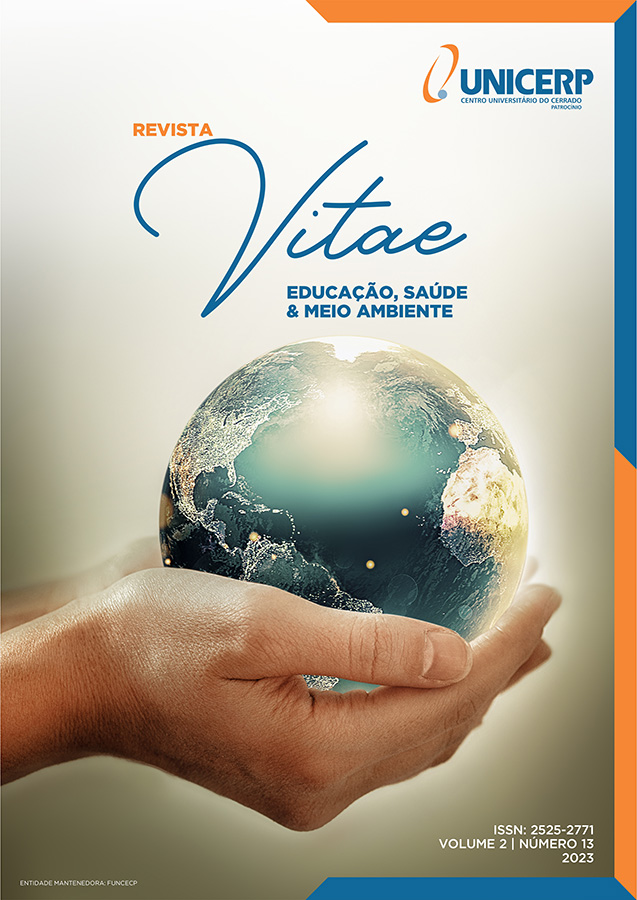[ID 192] PROFILE OF PREMATURE NEWBORNS INTERNED IN THE NEONATAL ICU
Keywords:
Newborn, Neonatal Intensive Care Units, EpidemiologyAbstract
INTRODUCTION: To know the profile of premature newborns (NB), being able to identify gaps in care and the possibility of transforming the realities of care and neonatal and maternal health. Objective: To analyze the profile of newborns admitted to the Neonatal Intensive Care Unit.
OBJECTIVE: To analyze the profile of newborns admitted to the Neonatal Intensive Care Unit.
METHODS: Quantitative and descriptive study conducted through the analysis of 65 medical records of newborns born in a hospital located in the interior of the state of Minas Gerais, between August 2020 and August 2021. The results obtained were organized in tables and submitted to statistical tests, with significant correlations for p<0.05. The study was approved by the Research Ethics Committee of UNICERP under protocol number 20201450PROIC005.
RESULTS: The predominant type of delivery was cesarean (73.8%), between 30 and 36 weeks of gestation (87.2%). Most were born low weight (55.0%), with good vitality (in the 1st and 5th minutes of life). The first minute Apgar score was 7.0 (SD=1.7; 2-9), while the fifth minute score was 8.5 (SD=1.1; 5-10). Even then, Hood -type ventilation was required (53.8%). The average length of stay was 18.7 days (SD=12.33, with a maximum of 53 days). At the outcome there was a predominance of discharge to the nursery (69.2%).
CONCLUSION: It is necessary to know the profile of preterm infants to be able to carry out diagnoses and interventions early, avoiding complications and even death for this NB.
KEYWORDS: Newborn. Neonatal Intensive Care Units. Epidemiology.
References
ALMEIDA, A. H. V. et al. Baixo peso ao nascer em adolescentes e adultas jovens na Região Nordeste do Brasil. Rev. Bras. Saúde Materna. Infant., Recife, v. 14, n.3, p. 279-286, 2014.
BARBOSA, A. P. Terapia intensiva neonatal e pediátrica no Brasil: o ideal, o real e o possível. J pediatra., v. 80, n. 6, p. 437-438, 2004.
COELHO. A. S. et al. Nursing team and humanized assistance in neonatal UTI. ReonFacema, v. 4, n. 1, p. 873-877, 2018.
DIAS, J. P. V. et al. Perfil clínico de neonatos internos em uma Unidade de Tratamento Intensivo Neonatal. Revista Brasileira de Desenvolvimento, v. 5, n. 10, p. 22296–22309, 2019.
LAWN, J. et al. 3,6 million neonatal deaths-What is a progressing and what is not? Semin Perinatol, v. 34, n. 6, p. 371-386, 2010.
LIMA, E. F. A. et al. Fatores de risco para a mortalidadae neonatal no município de Serra, Espírito Santo. Rev Bras Enferm., v. 65, n. 4, p. 578-585, 2012.
MALVEIRA, S. S. Recém-nascidos de muito baixo peso em um hospital de referência. Rev Para Med., v. 20, n. 1, p. 41-60, 2006.
NASCIMENTO JÚNIOR, F. J. M. et al. A Síndrome do Desconforto Respiratório do recém-nascido: fisiopatologia e desafios assistenciais. Ciências Biol e da Saúde, v. 2, n. 2, p.189- 198, 2014.
NETO, J. A. S.; RODRIGUES, B. M. R. Tecnologias como fundamento do cuidar em neonatologia. Texto contexto Enfermagem., v. 19, n. 2, p. 372-377, 2010.
REIS, Z. S. N. et al. Associação entre risco gestacional e tipo de parto com as repercussões maternas e neonatais. Rev Bras Ginecol Obstet., v. 36, n. 2, p. 65-71. 2014.
SERRA, M. J. R. et al. Fatores Associados ao Baixo Peso ao Nascer em Unidade de Terapia Intensiva Neonatal em um Hospital de Referência. Rev UNILUS Ens Pesq., v. 12, n. 27, p. 61-69, 2015.
SOUZA, C. L. et al. Fatores associados à ocorrência do parto cesáreo em um hospital público da Bahia. Revista Baiana de Saúde Pública., v. 42, n. 1, p. 76-91, 2018.
WHO. World Health Organization. Born too soon: the global action report on preterm birth. 2012. Disponível em: https://apps.who.int/iris/handle/10665/44864 Acesso em 10 de nov. de 2022.
WHO. World Health Organization. Brazil: health profile. Geneva, 2015. Disponível em: http://www.who.int/gho/countries/bra.pdf Acesso em 10 de nov. de 2022.
Downloads
Published
How to Cite
Issue
Section
License
Copyright (c) 2023 Revista Vitae Educação, Saúde & Meio Ambiente

This work is licensed under a Creative Commons Attribution 4.0 International License.
Todos os direitos autorais dos artigos publicados pertencem à Revista Vitae - Educação, Saúde & Meio Ambiente do UNICERP.
Os trabalho são originais e não estão disponíveis em outras publicações, quer seja no formato impresso ou no eletrônico.
A Revista se reserva o direito de efetuar nos originais alterações de ordem normativa, ortográfica e gramatical com vistas a manter o padrão culto da língua, respeitando, contudo, o estilo dos autores e que os originais não serão devolvidos aos autores.
Este trabalho está licenciado sob uma licença Creative Commons Attribution 4.0 International License (CC BY 4.0).







